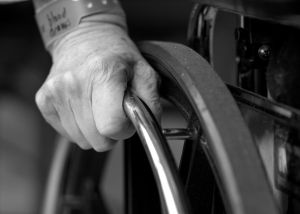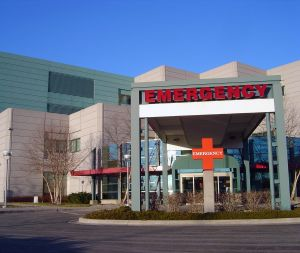 The National Highway Traffic and Safety Administration of the Department of Transportation strives to save lives through research, education, and technology. With regards to technology, the NHTSA has been making leaps and bounds with vehicle to vehicle connectivity, or V2V, since it started researching the technology over a decade, SF Gate reports. It allows cars equipped with V2V capability to communicate to each other information such as speed, direction, and location over a wireless network. The cars communicate with other vehicles within a 1000 foot radius around ten times every second. The car digests the information and warns the driver if it senses a possible collision.
The National Highway Traffic and Safety Administration of the Department of Transportation strives to save lives through research, education, and technology. With regards to technology, the NHTSA has been making leaps and bounds with vehicle to vehicle connectivity, or V2V, since it started researching the technology over a decade, SF Gate reports. It allows cars equipped with V2V capability to communicate to each other information such as speed, direction, and location over a wireless network. The cars communicate with other vehicles within a 1000 foot radius around ten times every second. The car digests the information and warns the driver if it senses a possible collision.
Recently, the NHTSA conducted a focus group with 688 individuals to gauge their reaction to vehicle to vehicle connectivity. The individuals were asked to fill out a pre-questionnaire, and then they were exposed to the V2V technology, and asked to fill out a second questionnaire. Finally, 96 of those surveyed participated in the focus groups. The focus groups were exposed to various functions of V2V communication, including forward collision warning, blind spot warning/Lane change warning, and left turn assist. Most participants responded that they would want the technology in their own car.
This summer, the NHTSA plans to conduct a real life test of V2V in cars, trucks, and buses driven by volunteers in Ann Arbor, Michigan. In a speech in January of this year, David Strickland of the NHTSA expressed his excitement about the promise of V2V communication between cars. He stated that V2V could dramatically reduce the accident rates due to distracted driving. Strickland cites that 80% of non-impaired accidents could be addressed with the technology.
NHTSA is working with various car manufacturers to produce after market V2V products and factory installed ones as well. GM is working on a version that is compatible with mobile phones and can be used by bicyclists and pedestrians in addition to motorists. The NHTSA would like to expand the idea of vehicles that communicate not only with other vehicles, but with infrastructure as well. The Research and Innovative Technology Administration puts forth that vehicle to infrastructure communication (V2I) could reduce road congestion by alerting drivers of the best route for present traffic conditions. It could also be used to more effectively time traffic signals, monitor public transit vehicles, and prevent road run-offs.
Continue Reading ›
 San Francisco Injury Lawyer Blog
San Francisco Injury Lawyer Blog













 Late Friday, according to an article in
Late Friday, according to an article in 
 One classic example in the industry has its own nickname: the so-called “death spiral.” This is when a health insurer closes a type of policy to all new customers and then raises rates to those remaining in that type of policy until those enrolled cannot afford it anymore. Since customers with pre-existing conditions cannot switch to a comparable or better policy, they are forced to accept either inferior coverage or much bigger premium increases.
One classic example in the industry has its own nickname: the so-called “death spiral.” This is when a health insurer closes a type of policy to all new customers and then raises rates to those remaining in that type of policy until those enrolled cannot afford it anymore. Since customers with pre-existing conditions cannot switch to a comparable or better policy, they are forced to accept either inferior coverage or much bigger premium increases.  According to a report in
According to a report in  The vast majority of mold we encounter on a regular basis, such as the mold that might appear on a shower curtain, is harmless. However, some types of mold can cause serious illness. One particularly dangerous type of mold is stachybotrys chartarum, a greenish-black mold that can be found in chronically moist or wet environments, particularly where materials have a high cellulose content including drywall, paper, wood, and certain ceiling materials. Toxic mold gives off spores or mycotoxins that can be inhaled by an unsuspecting individual.
The vast majority of mold we encounter on a regular basis, such as the mold that might appear on a shower curtain, is harmless. However, some types of mold can cause serious illness. One particularly dangerous type of mold is stachybotrys chartarum, a greenish-black mold that can be found in chronically moist or wet environments, particularly where materials have a high cellulose content including drywall, paper, wood, and certain ceiling materials. Toxic mold gives off spores or mycotoxins that can be inhaled by an unsuspecting individual.  The San Francisco Chronicle and the Associated Press are reporting the results of a survey conducted by the Center for Disease Control and Prevention (“CDC”). The
The San Francisco Chronicle and the Associated Press are reporting the results of a survey conducted by the Center for Disease Control and Prevention (“CDC”). The  The Oakland Tribune is
The Oakland Tribune is